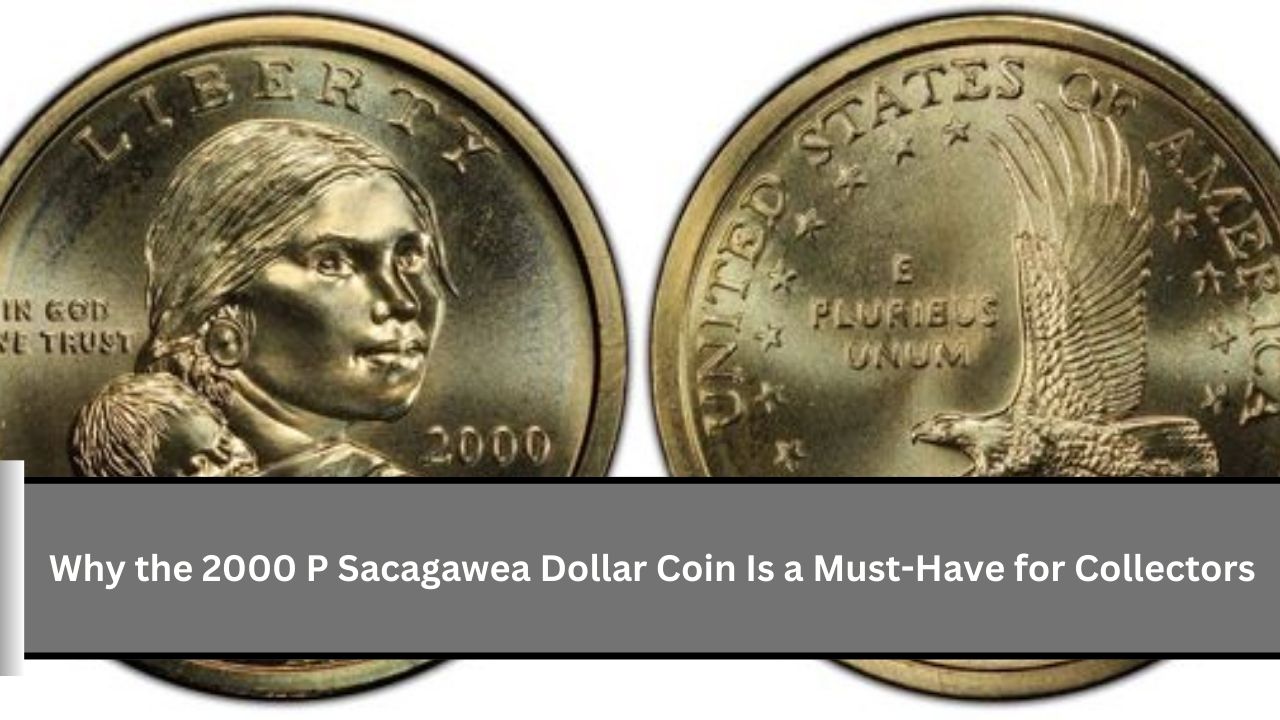The 2000 P Sacagawea One Dollar Coin holds a special place in U.S. coin history. Released in 2000, this dollar coin aimed to replace the unpopular Susan B. Anthony dollar, which resembled a quarter too closely. With its distinctive golden color and unique design, the Sacagawea dollar aimed to create a more user-friendly dollar coin. Today, this coin is admired by collectors and casual holders alike for its historical significance and visual appeal.
In this article, we will explore everything about the 2000 P Sacagawea One Dollar Coin — its design, production, value, and collectible status.
The Story Behind the Coin
The Sacagawea dollar was introduced to honor Sacagawea, a Native American woman from the Shoshone tribe. She played a crucial role as a guide and interpreter during the Lewis and Clark expedition from 1804 to 1806. Sacagawea is remembered for her courage, resilience, and contributions to this famous exploratory mission in U.S. history. Featuring her image on a coin celebrates her legacy and acknowledges the role of Native Americans in America’s history.
The coin’s creation was mandated by Congress, requiring the U.S. Mint to produce a new dollar coin. The need for a durable, long-lasting currency to replace quickly worn-out paper dollar bills drove this decision. The Sacagawea dollar was designed to be a visually distinct and durable alternative.
Design and Symbolism
The design of the 2000 P Sacagawea One Dollar Coin is striking and full of meaning. Below is a table summarizing the key design features of the coin.
| Feature | Description |
|---|---|
| Obverse (Front) | Sacagawea carries her infant son, Jean Baptiste Charbonneau, on her back. The word “LIBERTY” is above her head, and the motto “IN GOD WE TRUST” is to the left. The year “2000” and the mint mark “P” are at the bottom. |
| Reverse (Back) | Features a soaring American bald eagle, surrounded by 17 stars representing the states during the Lewis and Clark expedition. The words “UNITED STATES OF AMERICA” and “ONE DOLLAR” are engraved around the eagle. |
| Color and Material | Although called “golden,” the coin is made of a copper core and a manganese-brass outer layer, giving it a golden hue to distinguish it from other currency. |
Production and Distribution
The 2000 P Sacagawea One Dollar Coin was minted at the Philadelphia Mint, as indicated by the “P” mint mark on the coin. It was produced in large quantities for general circulation. However, the public was initially reluctant to use it, similar to its predecessor, the Susan B. Anthony dollar. Here’s a summary of the coin’s production and distribution:
| Aspect | Details |
|---|---|
| Minting Location | Philadelphia Mint (P) |
| Production Volume | Large quantities were produced for general circulation. |
| Public Acceptance | Initially faced challenges due to continued use of paper dollar bills and lack of familiarity. |
Despite these challenges, the Sacagawea dollar became popular among collectors. Its beautiful design, historical significance, and unique golden appearance made it a favorite among coin enthusiasts.
Value of the 2000 P Sacagawea Dollar
While the 2000 P Sacagawea One Dollar Coin was initially released for general use, its value has increased over time for certain coins, particularly those in mint condition or with specific errors. The table below shows the potential value of different types of Sacagawea dollars:
| Coin Type | Description | Potential Value |
|---|---|---|
| Circulated Coins | Most circulated coins are worth about $1. | Around $1 |
| Uncirculated Coins | Coins not used in circulation, typically valued between $1.50 and $5. | $1.50 – $5 |
| Proof Coins | Higher detail and mirror-like finish. | $5 – $10 or more |
| Error Coins | Minting errors like the “Cheerios Dollar,” can sell for hundreds or thousands. | Hundreds to thousands |
Types of Error Coins
Some 2000 P Sacagawea dollars contain minting errors that can be highly valuable to collectors. Here’s a brief overview of notable error coins:
| Error Type | Description | Potential Value |
|---|---|---|
| Cheerios Dollar | Special edition included in Cheerios cereal boxes with a different eagle design. | Hundreds to thousands |
Collectible Status
The 2000 P Sacagawea One Dollar Coin has become popular among numismatists, or coin collectors. Its historical significance, attractive design, and the possibility of finding rare error coins make it an appealing addition to any collection. Here’s a summary of its collectible status:
| Collectible Aspect | Details |
|---|---|
| Popularity | Gained a reputation as a modern collectible with unique features. |
| Investment Potential | Focus on uncirculated or proof coins for the highest value. |
| Rare Errors | Error coins like the Cheerios Dollar are highly sought after. |
Conclusion
The 2000 P Sacagawea One Dollar Coin stands out as an important piece of U.S. coinage. Although it faced challenges in circulation, it has become a beloved coin among collectors due to its unique design, golden color, and historical significance. Whether you are a seasoned coin collector or someone interested in starting a collection, the Sacagawea dollar is a fascinating piece of modern American history that continues to captivate and inspire.
If you happen to come across one of these coins in your pocket or drawer, take a closer look. You may just be holding a small, golden treasure worth more than its face value!
FAQs
What is the significance of the Sacagawea dollar coin?
The Sacagawea dollar coin honors Sacagawea, a Native American woman who served as a guide and interpreter for the Lewis and Clark expedition in the early 1800s.
How can I tell if my 2000 P Sacagawea dollar coin is valuable?
The value of a 2000 P Sacagawea dollar coin can vary.
What are some common minting errors found in the 2000 P Sacagawea dollar coin?
One of the most well-known minting errors associated with the 2000 P Sacagawea dollar is the “Cheerios Dollar,” which features a different eagle design and was included in Cheerios cereal boxes.
Where was the 2000 P Sacagawea dollar coin minted?
The 2000 P Sacagawea dollar coin was minted at the Philadelphia Mint, as indicated by the “P” mint mark located on the coin.
Why was the Sacagawea dollar created?
The Sacagawea dollar was created to replace the unpopular Susan B. Anthony dollar, which resembled a quarter too closely, leading to confusion among users.

